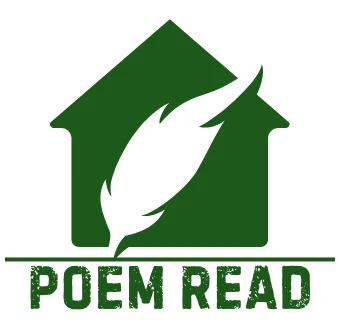
The Poem “I’m Nobody! Who are you?” by Emily Dickinson: An Analysis
Welcome to this detailed analysis of the poem “I’m Nobody! Who are you?” by Emily Dickinson. In the bustling world of literary giants, Emily Dickinson’s voice whispers a unique tune of rebellion wrapped in simplicity. “I’m Nobody! Who are you?” is a short yet powerful poem that dances on the edges of identity and society’s longing for fame.
In this blog post, we will explore the various literature-related aspects of this renowned poem, including the subject, the author, the context, the theme and tone, and the form or structure of the poem. Whether you are a literature student or simply have an interest in poetry, this article aims to provide a comprehensive understanding of this captivating piece.
I'm Nobody! Who are you? I’m Nobody! Who are you? Are you – Nobody – too? Then there’s a pair of us! Don't tell! they'd advertise – you know! How dreary – to be – Somebody! How public – like a Frog – To tell one’s name – the livelong June – To an admiring Bog!
Content
- About the Author: Emily Dickinson
- Subject of "I'm Nobody! Who are you?"
- Context of "I'm Nobody! Who are you?"
- The Theme and Tone of "I'm Nobody! Who are you?"
- The Form or Structure of I'm Nobody! Who are you?
- Line-by-line Analysis of "I'm Nobody! Who are you?"
- Literary and poetic devices in Emily Dickinson's "I'm Nobody! Who are you?"
- The implications of “I’m Nobody! Who are you?”
- Interactive Summary of “I’m Nobody! Who are you?”
- Conclusion: The Quiet Rebellion
About the Author: Emily Dickinson
Before we delve deeper into the poem itself, let’s take a moment to appreciate the brilliance of its creator, Emily Dickinson. Born in Amherst, Massachusetts, in 1830, Dickinson was a reclusive poet who lived most of her life in solitude. Despite her seclusion, she crafted a remarkable body of work that explored powerful themes such as love, death, nature, and the human experience. Therefore, Dickinson’s unique and introspective poetry has left an indelible mark on the world of literature.
Dickinson’s unique style and unconventional use of punctuation and capitalization set her apart from her contemporaries. Her poems often delve into the depths of the human soul, offering profound insights and reflections on life’s mysteries.
Subject of “I’m Nobody! Who are you?”
Emily Dickinson’s “I’m Nobody! Who are you?” is a celebration of anonymity and a critique of the societal chase for recognition. The poem’s subject is a bold statement on the joy of remaining unknown, of being ‘Nobody.’
Dickinson challenges the reader to consider the freedom that comes with obscurity, as opposed to the constraints of fame. She invites us to join her in the ranks of the ‘Nobodies,’ suggesting a secret fellowship that revels in the quiet spaces away from the public eye.
Setting
The setting of Emily Dickinson’s “I’m Nobody! Who are you?” is not explicitly described in the poem, which is typical of her work. However, the setting can be inferred from the themes and tone of the poem. It evokes a sense of intimate conversation, perhaps in a private, secluded space where the speaker can express their thoughts freely without the fear of being overheard or judged. The mention of “June” and “Bog” suggests a natural, outdoor setting, possibly reflecting the speaker’s inner landscape—a place where one can be at ease with their anonymity, away from the public eye.
Persona
The persona in “I’m Nobody! Who are you?” is the speaker, who claims to be “Nobody.” This persona is intriguing because it is both a declaration of self and a rejection of conventional social identity. The speaker’s voice is confident yet inviting, seeking connection with others who share the same desire for privacy.
The persona is relatable and approachable, embodying the spirit of those who find contentment outside the spotlight. Through this persona, Dickinson is able to explore and critique the constructs of identity and fame in a personal and direct manner.
Context of “I’m Nobody! Who are you?”
The context of the poem is deeply rooted in 19th-century American culture, where societal norms often dictated a pursuit of status and public acknowledgment. Dickinson lived during a time when the idea of self-promotion was becoming increasingly prevalent. Yet, she chose to live a life of solitude, rarely publishing her work during her lifetime. This poem, therefore, can be seen as a reflection of her personal choice to remain an outsider to the fame-seeking culture, as well as a broader commentary on the nature of celebrity and the value society places on it.
In a world where being ‘Somebody’ meant everything, Dickinson’s words stand out as a quiet yet powerful rebellion. She questions the very notion of what it means to be important and whether true contentment requires public validation. The poem’s context is a mirror of Dickinson’s own life choices, making it all the more poignant and impactful.
By juxtaposing the concepts of ‘Nobody’ and ‘Somebody,’ Dickinson creates a dialogue about the essence of identity. She implies that being ‘Somebody’ is dreary and monotonous, akin to a frog’s repetitive croak, seeking attention from an ‘admiring Bog.’ In contrast, being ‘Nobody’ is presented as a liberating state, free from the expectations and judgments of the world.
Through this exploration of subject and context, Dickinson’s poem resonates with timeless themes of individuality and societal pressure. It’s a call to find value in the uncelebrated aspects of ourselves and to question the allure of fame. As we continue to analyze the poem, we’ll uncover more layers that reveal the depth of Dickinson’s thoughts and the enduring relevance of her words.
The Theme and Tone of “I’m Nobody! Who are you?”

The Theme: The Value of Invisibility
Emily Dickinson’s “I’m Nobody! Who are you?” is a masterful exploration of the theme of identity and the societal pressures of fame. The poem celebrates the concept of invisibility and the freedom it brings. Dickinson suggests that there is a special kind of peace and satisfaction in being ‘Nobody,’ away from the spotlight and expectations of the world.
This theme resonates with readers who feel overwhelmed by the constant demand to present themselves, to be known, and to be seen. It’s a theme that champions the quiet life, where one can exist without the need for external validation.
The Tone: Playful Satire with a Serious Undertone
The tone of the poem is intriguingly playful and light, yet it carries a serious undertone of satire. Dickinson employs a conversational style that is almost whimsical, inviting the reader into a secret club of ‘Nobodies.’ Yet, beneath this playful exterior lies a sharp critique of the ‘Somebodies’—those who seek fame and public recognition.
The comparison of these individuals to a frog croaking in a bog throughout June is both humorous and expressive, highlighting the absurdity of such a noisy existence. Dickinson’s tone is not bitter but rather empathetic, understanding the human desire for recognition while gently mocking its futility.
By combining theme and tone, Dickinson creates a poem that is both lighthearted and thought-provoking. She invites readers to laugh at the absurdity of fame while also prompting them to reflect on their own desires and the societal pressures they face. It’s a tone that is as relevant today as it was in the 19th century, speaking to the universal human experience of finding one’s place in the world.
The Form or Structure of I’m Nobody! Who are you?
Emily Dickinson’s “I’m Nobody! Who are you?” is a masterclass in poetic economy, utilizing minimal structure to convey a depth of meaning. The poem consists of two quatrains, each with four lines, making it an eight-line poem in total. This brevity is intentional, reflecting the poem’s theme of simplicity and the unassuming nature of being ‘Nobody.’
Stanzas and Rhythm
The two stanzas are compact, yet they pack a punch. Each line is short, creating a quick rhythm that moves the reader through the poem at a brisk pace. This rhythm is akin to a heartbeat, steady and unassuming, much like the ‘Nobodies’ Dickinson speaks of.
Pauses and Line Breaks
Dickinson’s use of dashes introduces pauses that act as breaths within the poem. These pauses are moments of contemplation, inviting the reader to consider the weight of the words. The line breaks, too, are significant, as they often occur at moments of questioning or revelation, adding to the conversational tone of the poem.
Punctuation and Capitalization
The poem features unconventional punctuation and capitalization, which were characteristic of Dickinson’s style. The sparse use of punctuation opens up multiple interpretations and allows the lines to flow into one another, while the capitalization of certain words emphasizes their importance.
Rhyme Scheme
The rhyme scheme of the poem is simple yet effective. The slant rhymes create subtle music that enhances the poem’s charm. Dickinson’s choice of rhyme is not just for aesthetic purposes; it serves to underline the poem’s theme of nonconformity. The rhyme is consistent, yet it doesn’t follow a traditional pattern, much like the ‘Nobodies’ who don’t adhere to societal expectations.
Meter
The meter of Emily Dickinson’s “I’m Nobody! Who are you?” is a defining feature of its form and contributes to the poem’s overall impact. The poem is composed of two quatrains, and with the exception of the first line, it alternates between iambic tetrameter and iambic trimeter. This means that the lines generally have either four or three beats, with the stress falling on every second syllable, which is typical of the iambic meter.
The use of iambic meter gives the poem a rhythmic quality that is both familiar and comforting, much like a heartbeat. It’s a natural rhythm that readers often find pleasing and easy to engage with. Dickinson’s choice of meter aligns with the poem’s themes of simplicity and the ordinary, as iambic meter is one of the most common meters in English poetry.
The first line, “I’m Nobody! Who are you?” stands out because it breaks from the strict iambic pattern, drawing attention to the speaker’s declaration of being “Nobody.” This deviation from the meter is a subtle yet powerful way Dickinson emphasizes the theme of nonconformity that runs throughout the poem.
In summary, the form and structure of “I’m Nobody! Who are you?” is as essential to the poem’s message as the words themselves. Dickinson’s strategic use of stanzas, rhythm, pauses, punctuation, and rhyme all contribute to a work that is as structurally innovative as it is thematically rebellious. It’s a poem that invites readers to find beauty in the quiet, uncelebrated corners of life and literature.
Line-by-line Analysis of “I’m Nobody! Who are you?”
“I’m Nobody! Who are you?”
This opening line immediately introduces the theme of identity. The speaker declares themselves as “Nobody,” which is a paradoxical statement. It’s a bold claim that sets the tone for the poem’s exploration of anonymity versus fame. Furthermore, the use of the exclamation mark emphasizes the speaker’s assertiveness, while the question posed to the reader invites introspection and engagement.
“Are you – Nobody – too?”
Here, the speaker seeks a connection with another “Nobody.” There’s an excitement in finding someone else who shares the same disdain for public recognition, suggesting camaraderie among those who value privacy. The repetition of “Nobody” reinforces the theme of unimportance or insignificance, challenging societal notions of fame and recognition.
“Then there’s a pair of us!”
The discovery of another “Nobody” brings joy to the speaker. It’s a moment of connection that defies the conventional desire to be “Somebody.” This line emphasizes the comfort found in shared anonymity. Moreover, the exclamation signifies this moment of realization or connection, further strengthening the bond between the two “nobodies.”
“Don’t tell! they’d advertise – you know!”
The speaker warns against revealing their status as “Nobodies.” The use of “advertise” is ironic, as it typically connotes making something widely known, which is the exact opposite of what the speaker desires. Here, the use of “they” implies the societal forces that seek to exploit or capitalize on individuality. Therefore, this line reinforces the poem’s critique of fame and exposure.
“How dreary – to be – Somebody!”
Dickinson uses the word “dreary” to describe the state of being “Somebody,” which is often associated with excitement and desirability. This reversal of expectations highlights the poem’s satirical tone.
This line marks a shift in tone, as the speaker reflects on the perceived burdens of being “Somebody” – someone who commands attention and recognition. The repetition of “– to be –” emphasizes the weightiness of this existence, suggesting a sense of weariness or disillusionment.
“How public – like a Frog –”
Dickinson employs imagery here, likening the experience of being “Somebody” to that of a frog for constant self-promotion and the need for attention. Frogs are known for their loud croaking, which can be seen as a symbol of the noisy pursuit of fame.
The comparison underscores the lack of privacy and authenticity associated with fame. Furthermore, it highlights the vulnerability of those thrust into the limelight.
“To tell one’s name – the livelong June –”
This line suggests the tediousness of continuously stating one’s name, akin to the frog’s incessant croaking. June, being the peak of summer, represents a time of heightened activity, further emphasizing the relentless nature of self-advertisement. The use of “livelong June” evokes a sense of endless repetition and monotony.
“To an admiring Bog!”
The final line presents the audience of “Somebody” as a bog, a place that is stagnant and unremarkable. The admiration for such a place is depicted as meaningless, reinforcing the poem’s message that true worth isn’t derived from public acclaim.
Through this analysis, we see how Dickinson skillfully uses language to critique the societal norms of her time. Her use of metaphor, irony, and a playful tone invites readers to question the value of fame and the comfort of anonymity. The poem remains a powerful commentary on identity and the human desire for connection without the trappings of recognition.
Literary and poetic devices in Emily Dickinson’s “I’m Nobody! Who are you?”

Imagery
Dickinson utilizes vivid imagery to evoke powerful mental images and sensations, enriching the reader’s experience. For instance, the comparison of being “public – like a Frog” conjures the image of a frog croaking loudly, highlighting the lack of privacy associated with fame.
Metaphor
Throughout the poem, Dickinson employs metaphorical language to convey abstract concepts through concrete imagery. One striking example is the comparison of the audience to an “admiring Bog,” metaphorically representing a shallow and stagnant environment devoid of genuine appreciation.
Repetition
Repetition is a prominent feature in Dickinson’s poem, serving to reinforce key themes and ideas. The repeated use of the word “Nobody” emphasizes the speaker’s identity and highlights the theme of anonymity versus notoriety.
Personification
Dickinson imbues inanimate objects with human qualities, adding depth and resonance to her verses. The line “How public – like a Frog” personifies the concept of publicity, endowing it with the characteristics of a vocal amphibian.
Irony
Irony permeates the poem, as Dickinson skillfully juxtaposes contrasting ideas to underscore her thematic message. The speaker’s declaration of being “Nobody” with a sense of pride and camaraderie is laden with ironic commentary on societal values.
Alliteration
Alliteration is the repetition of consonant sounds at the beginning of words close to each other in a line or verse. Dickinson uses this device to create a musical quality that enhances the poem’s rhythm. For example, “Don’t tell! they’d advertise – you know!”.
Anaphora
Anaphora is the repetition of a word or phrase at the beginning of successive clauses or lines.Dickinson employs this to emphasize her point and to build a connection with the reader, as seen in the repeated use of “How” at the beginning of lines 5 and 6.
Simile
A simile is a figure of speech that compares two different things using the words “like” or “as.” In this poem, Dickinson uses a simile when she compares being ‘Somebody’ to being “public – like a Frog –” which suggests the noisy and attention-seeking nature of those who are in the public eye.
Satire
Satire is a literary technique that writers use to expose and critique the foolishness and corruption of a person or a society through humor, irony, exaggeration, or ridicule. Dickinson’s poem uses satire to mock the societal norms that value fame and public recognition over privacy and anonymity.
Internal Rhyme
Internal rhyme occurs when a word in the middle of a line rhymes with a word at the end of the same metrical line. While the poem does not have a regular end rhyme scheme, it does feature internal rhymes that contribute to its musicality.
Masculine Rhyme
Masculine rhyme is a rhyme on a single stressed syllable at the end of a line of poetry. This can be seen in the poem, where lines 1 and 2 (“you” / “too”) and lines 6 and 8 (“frog” / “bog”) end with masculine rhymes.
Pronouns
The incorporation of pronouns like “you,” “we,” “us,” and “your” draws the reader into the poem, creating a sense of intimacy and direct conversation with the speaker.
These literary devices work together to create a poem that is both playful and profound, inviting the reader to reflect on the themes of identity, fame, and the value of privacy. Dickinson’s skillful use of these devices ensures that the poem remains engaging and thought-provoking, resonating with readers long after they have finished reading.
The implications of “I’m Nobody! Who are you?”
The implications of Emily Dickinson’s poem “I’m Nobody! Who are you?” extends far beyond its simple structure and playful tone. It’s a poem that resonates with the human experience, particularly in the context of society’s views on fame and identity.
The Implications of Anonymity
The poem suggests that there is a certain power and freedom in anonymity. By declaring “I’m Nobody,” Dickinson is not only embracing her own obscurity but also challenging the reader to reconsider the value of a private life. In a world that often equates success with visibility, the poem implies that there is virtue in being unknown and unrecognized.
Critique of Fame and Public Life
Dickinson’s comparison of public figures to a “Frog” in a “Bog” implies a critique of the superficial nature of fame. The poem suggests that the constant need for attention and recognition is dreary and monotonous. It implies that those who seek fame are like frogs, making noise without substance, craving admiration from an undiscerning audience.
Reflection on Social Norms
The poem reflects on the social norms of Dickinson’s time, which still hold true today. It implies that society places undue importance on being “Somebody,” often at the expense of individuality and authenticity. Dickinson’s work encourages readers to find value in their thoughts and inner lives, rather than seeking external validation.
A Call for Genuine Connection
By finding joy in meeting another “Nobody,” the poem implies that genuine connections are not based on social status or fame. It suggests that true companionship comes from shared values and understanding, rather than from the superficial ties that often accompany public life.
Feminine Power and Independence
For many, the poem is also a statement of feminine power and independence. Dickinson, living in a patriarchal society, implies that women, too, can find strength in their solitude and need not conform to societal expectations to be considered successful or meaningful.
In essence, “I’m Nobody! Who are you?” carries implications that question the societal pursuit of fame, advocate for the appreciation of a private life, and celebrate the authenticity of the self. It’s a poem that continues to inspire introspection and a reevaluation of the values that society holds dear.
Interactive Summary of “I’m Nobody! Who are you?”
Emily Dickinson’s “I’m Nobody! Who are you?” is a playful yet profound meditation on the concept of identity and the societal pressures of fame. The poem, through its concise form and clever use of language, invites readers to consider the value of anonymity and the freedom it offers from the relentless pursuit of recognition.
The speaker, declaring themselves as “Nobody,” finds joy in this unassuming identity and seeks camaraderie with others who share this sentiment. The poem’s tone is light and conversational, yet it carries an undercurrent of satire, critiquing those who, like frogs, incessantly croak their names to an undiscerning audience.
Dickinson’s use of literary devices such as alliteration, anaphora, and internal rhyme adds a layer of complexity to the poem, making it a delightful read that encourages reflection on the themes presented.
Conclusion: The Quiet Rebellion
In conclusion, “I’m Nobody! Who are you?” stands as a quiet rebellion against the societal norms that equate worth with visibility. Dickinson’s poem is a celebration of the ‘Nobodies’—those who find contentment in their inner lives, away from the public gaze. It’s a reminder that in a world obsessed with the idea of being ‘Somebody,’ there is a special kind of peace in being ‘Nobody.’
The poem’s enduring appeal lies in its ability to connect with readers across generations, offering a perspective that challenges the conventional desire for fame. It’s a testament to Dickinson’s genius that she can express such a powerful message in so few words, leaving us to ponder the true nature of identity and the value of a life lived quietly yet fully.
So, let’s ask ourselves: In the wider picture of life, is it not a remarkable thing to be ‘Nobody’? To exist freely, without the constraints of expectation, and to find joy in the simple act of being—perhaps that is the greatest rebellion of all.
If you enjoyed “I’m Nobody! Who are you?” I highly recommend reading our analysis of “Dear Friends” by Edwin Arlington Robinson for its exploration of the tension between individual ambition and societal judgement.
RELATED POSTS
View all



